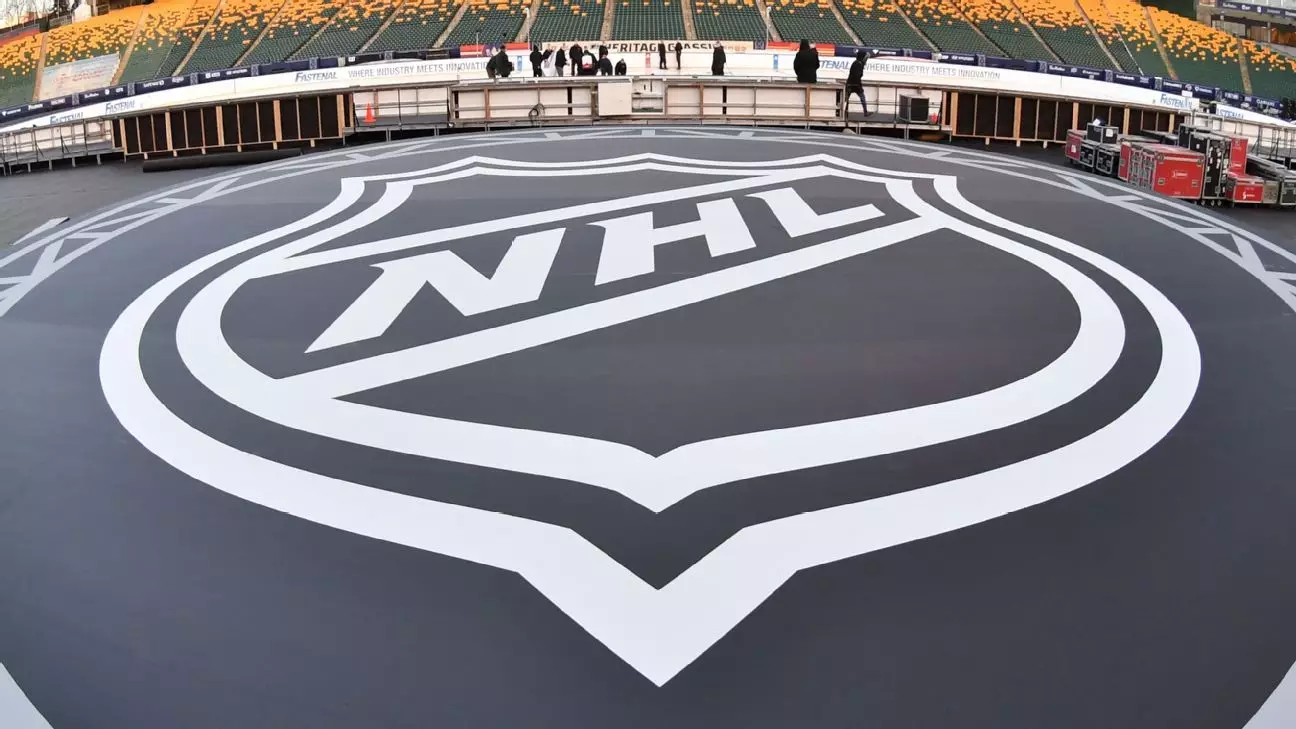The world of professional sports often shines a spotlight solely on athletic prowess, but a significant shift is taking place within the NHL—one that recognizes the importance of education for its players. An innovative agreement announced recently between the NHL Players’ Association (NHLPA) and Boston College presents a promising opportunity for players to pursue their college degrees. This initiative not only acknowledges the importance of education but also highlights the long-term benefits of academic achievement for athletes whose careers are typically brief.
Boston College’s Woods College of Advancing Studies is set to become a key player in facilitating the educational aspirations of current and former NHL players. The college specializes in providing flexible academic paths tailored to non-traditional students, a demographic that includes many hockey players who often juggle rigorous sports schedules with education. The partnership is a response to a recognized need for more accessible educational options, aimed at removing barriers that may have previously hindered players from completing their degrees.
The NHLPA’s executive director, Marty Walsh, has reflected on the personal impact of his own educational journey, as he earned his degree while managing a busy career in politics and hockey. His experience serves as an inspiration, shedding light on the challenges facing those who aspire to achieve both athletic and academic success. Numerous players find themselves caught in a whirlwind, leaving college before graduation in pursuit of their dreams on the ice. With this new agreement, they will have the opportunity to revisit their academic goals in a supportive environment.
David Goodman, the dean of Woods College, remarked that the new partnership marks a natural progression in the relationship between the two entities. The agreement seeks to “remove friction” that has historically made it difficult for players to transition back into student life. One notable aspect is the ease of transferring previously earned credits, a process that can often be complex and discouraging for returning students.
Players such as Brooks Orpik, a former NHL defenseman who secured a degree post-retirement, serve as valuable testaments to the importance of completing a college education. Orpik’s commitment to obtaining his degree, despite a successful NHL career that included two Stanley Cup titles, underscores the dual importance of both education and athletic achievement. He expressed immense pride in finally finishing his degree, a sentiment that resonates deeply with other players who may feel similar pressures.
The learning opportunities provided through this new collaboration are tailored to accommodate the varying schedules and commitments of NHL players. With options for online, hybrid, or in-person courses, education becomes a more manageable endeavor for those with demanding careers. The agreement does not impose a cap on the number of players who can enroll, allowing for greater inclusivity. Goodman optimistically predicts that a “couple of dozen”players may take advantage of this opportunity, with the potential to expand the program as interest grows.
This initiative comes at a time when other professional sports leagues are recognizing the importance of academic advancement for their players. The MLB Players Association recently announced a similar collaboration with Syracuse University, demonstrating a broader trend towards enhancing players’ educational prospects. Such parity among leagues suggests a growing acknowledgment within professional sports of the importance of equipping athletes with the skills and knowledge necessary for life after sports.
One of the core philosophies behind these educational initiatives is to ensure that players are prepared for their post-career lives. The NHL, which boasts that over one-third of its players have played college hockey, is acutely aware that many players discontinue their education prematurely. With the average retirement age being in the 30s, this leaves a significant amount of life in which they are not only seeking new career paths but also need skills that education can provide.
Players typically step off the ice at an age when they have the opportunity to pursue new ambitions, but returning to school may not be the first thing on their minds. As Goodman aptly noted, it might not seem appealing to return to education after a successful career in the NHL. However, through this new partnership, a concerted effort is made to change that perception and to encourage athletes to prioritize completing their degrees, emphasizing their value even beyond sports.
The alliance between the NHL Players’ Association and Boston College represents a significant step towards integrating education with sports. This new initiative not only benefits current players but also sets a precedent for future athletes, ensuring they have the resources and opportunities to succeed academically as they navigate their post-athletic lives.


Leave a Reply